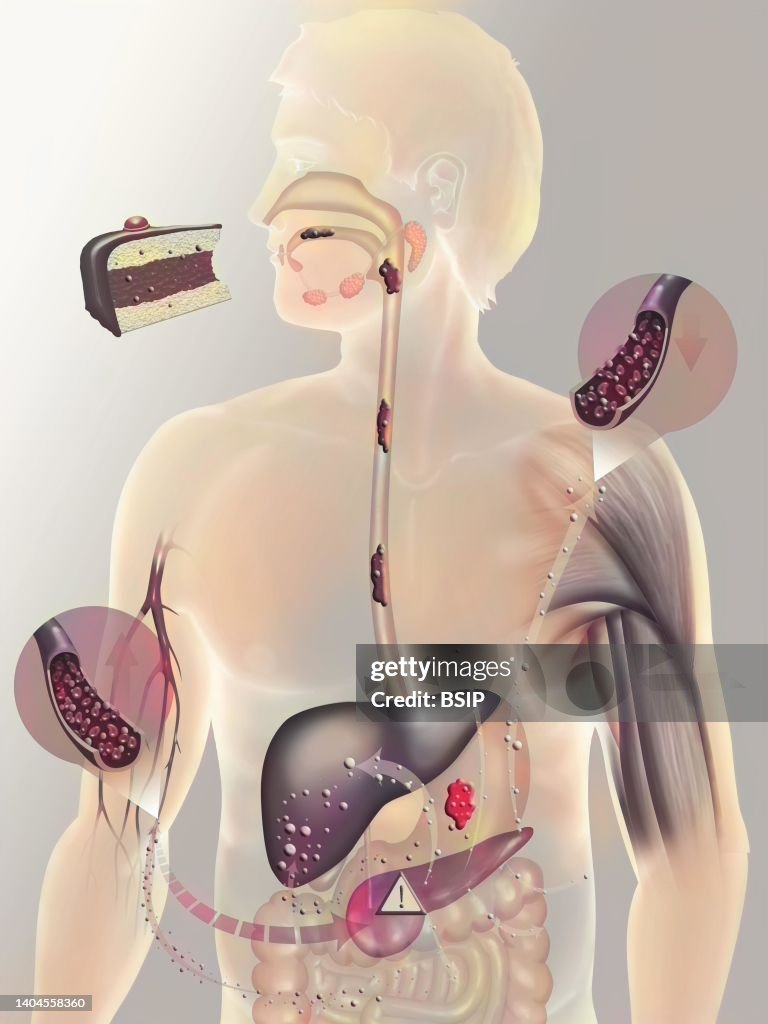Diabetes, drawing
Secretion of insulin on a person with diabetes type 2. Diabetes type 2 (or non-insulin-dependent) is a form of diabetes mellitus affecting mainly adults over 40 due to a food too rich in fat, the metabolism of glucose is very perturbated. The muscle cells do not respond normally to the action of insulin, that is responsible for indicating them to let glucose enter to make glycemia decrease (rate of sugar in the blood). The ingestion of a sweetened aliment causes an increase of glycemia (glucose in blue). This provoks the secretion of insulin (in yellow) by the pancreas, that is sent to different organs of the body to stimulate the use of glucose, mainly towards the muscles and the spleen. Thereby, glucose will be either transformed into glycogen (in green) to be stocked in the liver and the muscles, or either used by the other organs. This will then make the rate of blood sugar decrease. On the patient with diabetes type 2, often in overweight, the secretion of insulin by the pancreas is insufficient to cover the needs , so the rate of blood sugar remains high despite the production of insulin by his pancreas. See. images 8814206 for the metabolism of glucose on a non-diabetic individual, 8813806 for the diabetes type 1 and 8810806 for the diabetes type 2 on a feminine silhouette. (Photo by: MARIE SCHMITT/BSIP/Universal Images Group via Getty Images)

PURCHASE A LICENSE
How can I use this image?
€300.00
EUR
Getty ImagesDiabetes, drawing, News Photo Diabetes, drawing Get premium, high resolution news photos at Getty ImagesProduct #:1404558360
Diabetes, drawing Get premium, high resolution news photos at Getty ImagesProduct #:1404558360
 Diabetes, drawing Get premium, high resolution news photos at Getty ImagesProduct #:1404558360
Diabetes, drawing Get premium, high resolution news photos at Getty ImagesProduct #:1404558360€475€115
Getty Images
In stockPlease note: images depicting historical events may contain themes, or have descriptions, that do not reflect current understanding. They are provided in a historical context. .
DETAILS
Restrictions:
Contact your local office for all commercial or promotional uses.
Credit:
Editorial #:
1404558360
Collection:
Universal Images Group
Date created:
July 31, 2021
Upload date:
License type:
Release info:
Not released.��More information
Source:
Universal Images Group Editorial
Object name:
941_28_bsip_016241_003
Max file size:
3630 x 4838 px (12.10 x 16.13 in) - 300 dpi - 1 MB